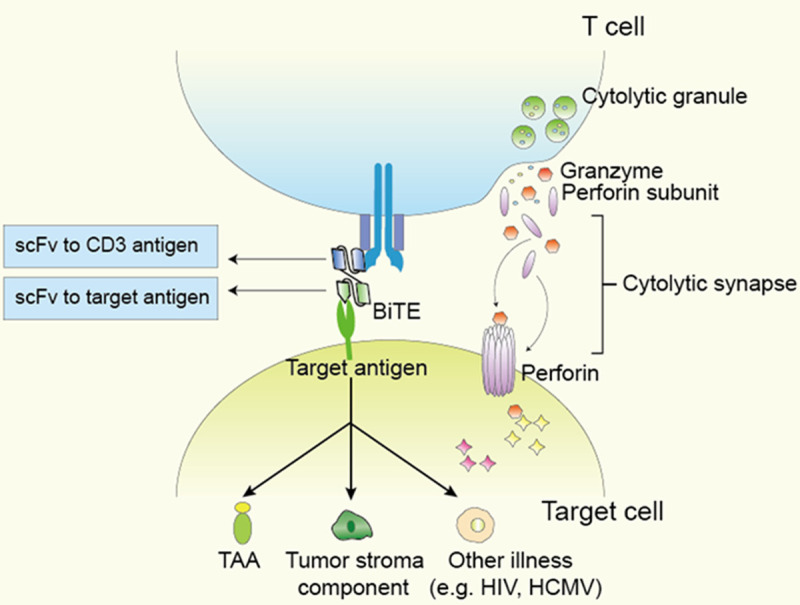Figure 1.

Structure and function of BiTE. BiTE simultaneously binds CD3 and target antigen to induce T cell activation and proliferation. Activated T cells release cytokine and cytolytic granules containing perforin and granzyme. Perforin forms a tube structure on target cell membrane, which allowed granzyme to enter target cells and induce programmed cell death of target cells. Currently designed BiTE can target tumor associated antigens (TAA), tumor stromal cells and non-tumor pathogens, such as human immunodeficiency virus (HIV) and human cytomegalovirus (HCMV).
